If you’re preparing to soar through the Indian skies, buckle up; you’re in for an adventure at Indian airports. Having navigated through India for over 4 years, taking over 10 flights, I’ve had my fair share of airport tales, from the chaotic terminals of Delhi to the serene ambiance of Ladakh.
For newcomers and seasoned travelers alike, here’s your go-to guide with 15 Indian airport travel tips:
1. Arrive More Than 3.5 Hours Early
2. Opt for Tech-Savvy Airlines Like IndiGo
3. Have the Necessary Documentation
4. Bypass Flight Check-in When Possible
5. Get Deals on Better Seats
6. Consider Wrapping Your Baggage in Plastic
7. Understand the Nuances of Indian Airport Security
8. Have Digital and Paper Copies of Essential Documents
9. Get a Local eSIM or SIM Card
10. Travel During Off-Peak Hours
11. Pack Well and Light
12. Follow Airport Etiquette in India
13. Stay Hydrated and Make Healthy Food Choices
14. Be Wary of Dodgy Airport Food Stalls
15. Prepare for Finding Fair-Priced Taxis
You won’t want to miss a tip because missing a flight could waste hundreds of dollars. I’ll also cover my experiences in the major Indian airports with tips about restaurants, shops, taxis, and places to relax.
Dive in, and let me share with you what I’ve learned!
Planning a trip to India at some point? Check out my free ebook to help you save time and money, and avoid headaches. After +4 years in India, I’ve made plenty of mistakes, and this guide shares what I’ve learned so you can have a smoother trip.
15 Indian Airport Travel Tips
1. Arrive More Than 3.5 Hours Early
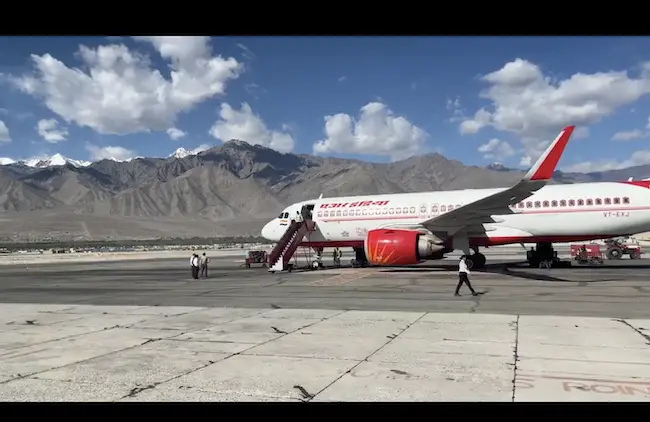
Indian airports, especially major ones like Delhi and Mumbai, can get incredibly crowded. My flight from Delhi to Chennai once taught me that unpredictable traffic jams outside the airport could also cause delays. So, better safe than sorry!
I always arrive at the airport more than 3 hours before my flight, even on domestic flights. This helped me during COVID when I had to run for a last-minute COVID test. Or when I recently forgot to get a paper boarding copy and had to go back to the check-in desk after almost making it through security.
Pro Tip: Weekends are busier. If you’re flying on a Saturday, perhaps add an extra half hour to that early arrival time.
Read more: The Best Days and Months To Book Flights To India
2. Ensure You Have the Necessary Documentation

Nothing’s worse than reaching the airline counter and realizing you’ve forgotten an essential document. Always carry a valid photo ID, ticket, and passport, and visa if you’re an international traveler.
I also make copies of my hotel bookings since customs documentation sometimes requires the address. I will also download offline maps of the new destination in case I can’t find a SIM card (but I have a pro tip on that further down!).
Pro Tip: If traveling to places like Srinagar or Ladakh, always keep multiple photocopies of your documents. These regions may require them for security checks.
Read more: Here’s the Travel Checklist for India that I use so I don’t forget anything. There’s a free PDF you can download to help as well.
3. Opt for Tech-Savvy Airlines Like IndiGo
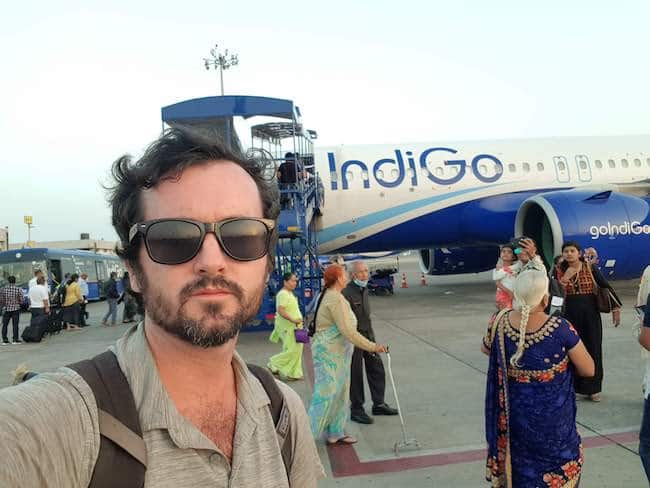
During my travels, I’ve noticed that airlines like Indigo offer efficient online services and often have quicker check-in processes. It’s an effortless way to save time!
I like that they always text me, and their website interface is simpler. They usually have kiosks in the terminal that let you print your boarding pass and avoid waiting in line to check baggage (if you’re carrying on your luggage).
Pro Tip: Download the airline app. Most provide real-time updates on any flight changes.
Fun Fact: IndiGo holds the title for the largest passenger airline in India by market share!
Check out the best Travel Apps for India for other good options to make your travels more smooth.
4. Bypass Flight Check-in When Possible
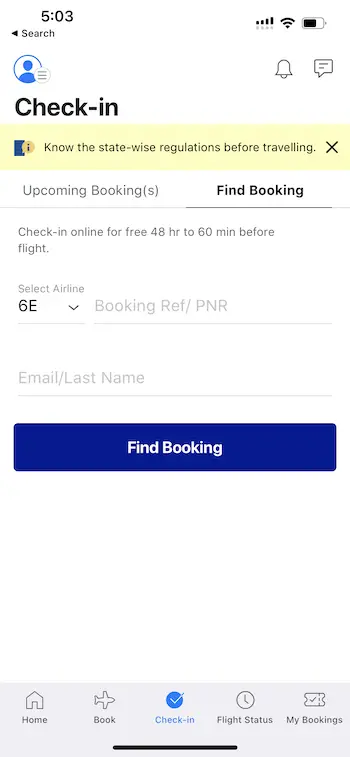
I remember my trip to Bangalore, where I effortlessly used a self-service kiosk to get my boarding pass, skipping a long queue. If you’ve checked in online, look for these lifesavers!
IndiGo is a great airline to choose to be able to do this. I recommend always asking the airline staff, though, as I have thought I was good after getting an online boarding pass, but — nope! I got rejected at security and wasted a lot of time returning to the airline counter. Had I not arrived so early, I might have missed my flight.
Pro Tip: Many airports have specific counters for web check-in bag drops, which often have shorter lines.
This post is one part of my series about traveling India, and I wrote a longer, definitive guide to Getting Around India by public transport, including trains, buses, rickshaws, and even elephants. It’s a must-read for India travelers.
5. Get Deals on Better Seats
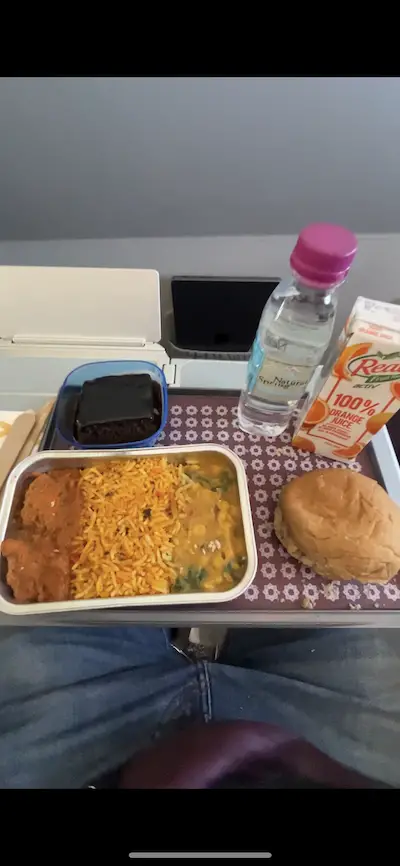
Securing better airline seats without a hefty price tag is an art that involves a blend of timing, loyalty, and vigilance.
Booking your flight early gives you an advantage, as seat availability is typically higher, allowing you to choose from options like extra legroom or specific seat positions. Being a member of airline loyalty programs can also be beneficial, granting early access to seat sales, priority seat selection, and potential upgrades.
Some credit cards tailored for travelers even offer seat upgrade perks, so it’s worth checking out any associated benefits.
Websites like SeatGuru offer comprehensive seat reviews for specific flights, guiding you to the best choices. Another potential strategy is booking during off-peak times when the demand is lower, which can increase the availability of prime seating.
Lastly, being adaptable can play to your advantage. Airlines might sometimes have unsold premium seats upon check-in, so a courteous inquiry might land you an upgrade. Airlines sometimes need to move passengers to premium classes if the economy class is overbooked. Also, consider the potential of last-minute upgrades, which airlines might offer at discounted rates if there are unsold premium seats as the departure time nears.
During my Kolkata venture, I snagged a deal for a window seat with extra legroom, all thanks to an early web check-in.
Pro Tip: Major Indian airlines occasionally offer discounts on better seats during online check-ins. Keep an eye out!
Read more: Setup a travel budget for India with my free downloadable worksheet
6. Consider Wrapping Your Baggage in Plastic
In the terminal of most Indian airports, you’ll find machines that will securely wrap your luggage in plastic wrap.
I’ve used this when I traveled with expensive electronics, and I was checking my luggage. It’s not perfect but could prevent theft. I know it made me rest easier on the flight, and my laptop and hard drives would be okay.
Pro Tip: I also use TSA-approved security locks for added protection without the hassle or cost of wrapping my bag.
7. Understand the Nuances of Indian Airport Security
Security checks at places like Delhi or Chandigarh can be strict but efficient. Always remove your belt, shoes, and any heavy jewelry to speed up the process.
Some Indian airports have chaotic security protocols — yes, I’m looking at you, Delhi and Ladakh. But other airports like Chandigarh and Bangalore have more smooth processes.
I suggest packing your electronics in one bag, taking everything out, and putting it in multiple trays. Then after you make it through repacking your bag as you want.
Pro Tip: Ladies, avoid wearing elaborate metal accessories; it can lead to unnecessary hold-ups.
8. Maintain Both Digital and Paper Copies of Essential Documents
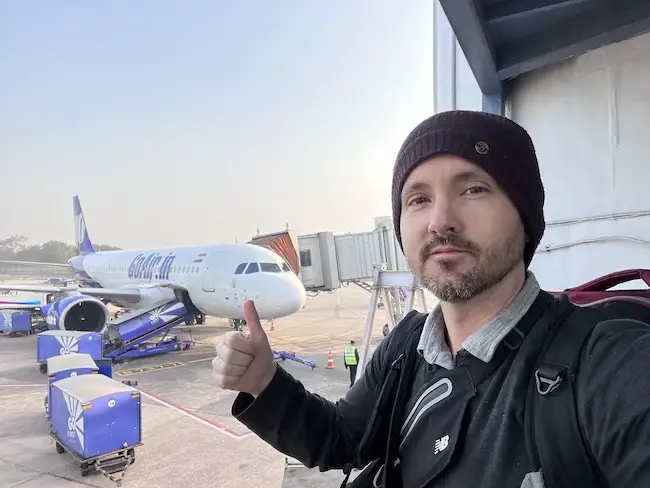
A personal anecdote: My trip to Ladakh was almost derailed when I accidentally deleted my ticket email. Thank heavens for that printed copy!
I make a folder on my iPhone with all my digital copies of flight tickets, visas, hotel bookings, taxi pre-bookings, and more. I also email them to myself and save them in the cloud.
Then I keep paper copies in my runner’s pouch that I keep on my body.
Pro Tip: Store digital copies in cloud storage like Google Drive, ensuring access from any device.
Read more: Here are 25 India Travel Hacks to help you have a safe and amazing trip
9. Procure a Local eSIM And/Or Card
Getting a local SIM can save you loads on roaming charges. Some states in India won’t let you use a SIM card from other states. For instance, I had to get a new local SIM in Srinagar even though I had just bought one at the Delhi airport.
I recommend checking the arrivals terminal for Airtel, Jio, or Vodafone booths. The airport will have the easiest way to get a local SIM card.
Pro Tip: I also usually get an eSim using Airalo. You can get an Indian eSIM that works in most states (except Jammu and Kashmir, and Ladakh), and that keeps me always connected. Then I can find a local SIM card without the stress.
Read more: How To Use An American Cell Phone in India
10. Travel During Off-Peak Hours
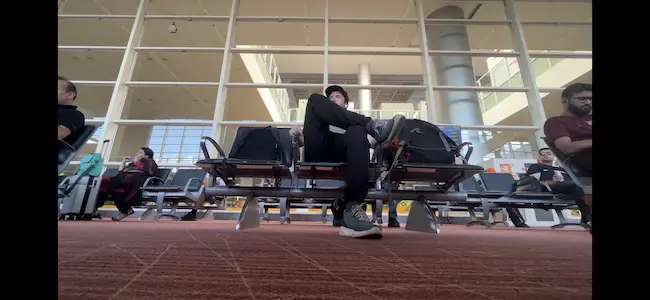
My flights during off-peak hours were often cheaper and less crowded, like that serene early morning flight from Chandigarh to Delhi.
Pro Tip: Late-night and early-morning flights are often cheaper and less crowded.
11. Pack Well and Light
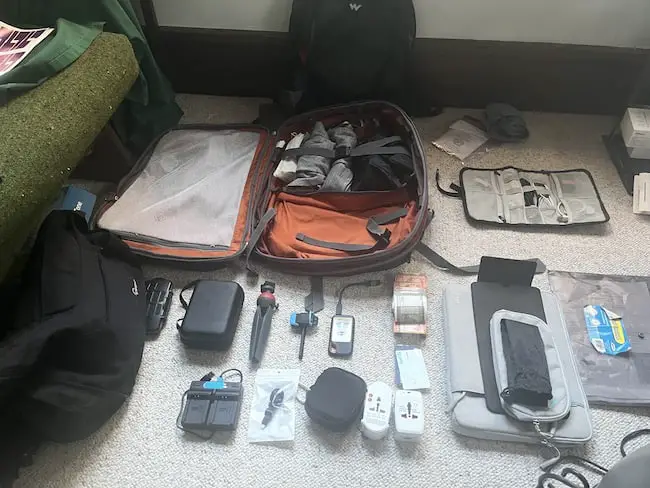
I never check my bags anymore, and even though I’ve been in India for almost a year on this most recent trip, all my stuff can fit in one carry-on bag.
My luggage got lost on my last trip back to the USA, and my family’s souvenirs were almost lost. Therefore, I now pack light with the basics for India and work online. I have extra room to buy new items as I need them.
Pro Tip: Check out my free PDF packing list for India that will help men and women.
12. Understand and Follow Airport Etiquette in India
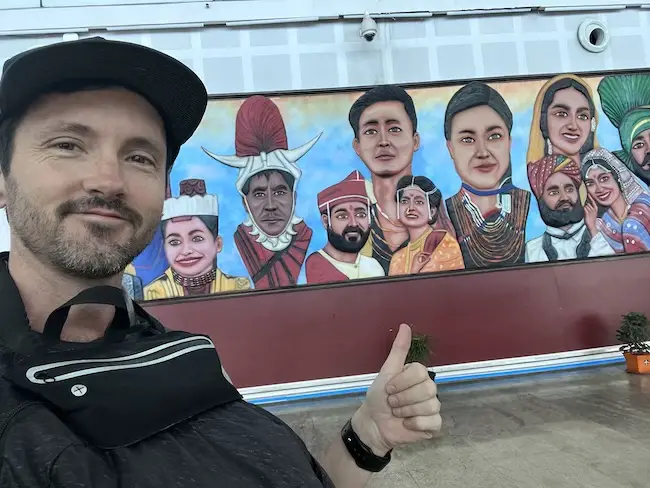
Indian airports value decorum. Whether in cosmopolitan Mumbai or picturesque Srinagar, always be respectful and patient.
Airports like Srinagar have more security checkpoints, so keep your documents handy.
Pro Tip: Hold your place in line. The practice of queuing up is not always commonplace in India, so while in security or airline checkpoints it’s okay to “box out” that aggressive uncle behind you.
13. Stay Hydrated and Make Healthy Food Choices

I always carry a refillable water bottle. Many airports, like Delhi, have filtered water dispensers. I enjoy eating at the airport restaurants, but I am pretty choosey. Below I’ve included my favorite restaurants at India’s major airports.
Avoid alcohol because it’s overpriced in Indian airports and could increase your jet lag.
Pro Tip: Airport air can be dry, so keep sipping water to stay hydrated.
14. Be Wary of Dodgy Airport Food Stalls
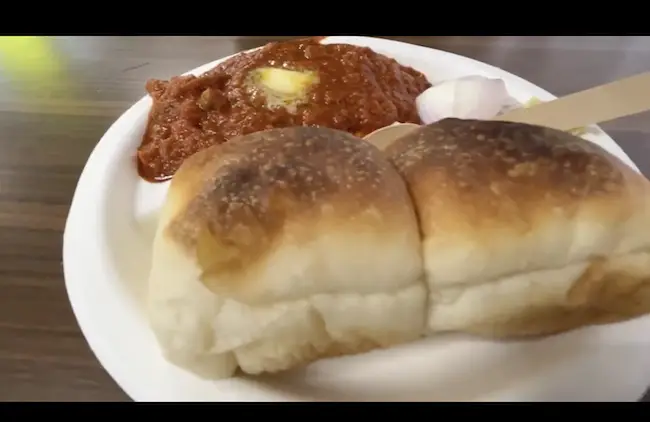
During a layover in Kolkata, I discovered that the branded eateries, although slightly pricier, ensured a quality meal.
I like Krispy Kreme, KFC, Pizza Hut, Domino’s, Subway, McDonald’s and more.
Airports like Delhi, Mumbai, and Bangalore have top-notch eateries. But Chennai’s international airport restaurants are pretty terrible. Eat ahead of time or you’ll be stuck with a stale paneer masala sandwich that costs $5.
Pro Tip: Check online reviews of airport eateries in advance.
You’ll want to try street food in India so I wrote a full guide with all the dishes from every region
15. Familiarize Yourself With Pre-Paid Taxis & Ubers
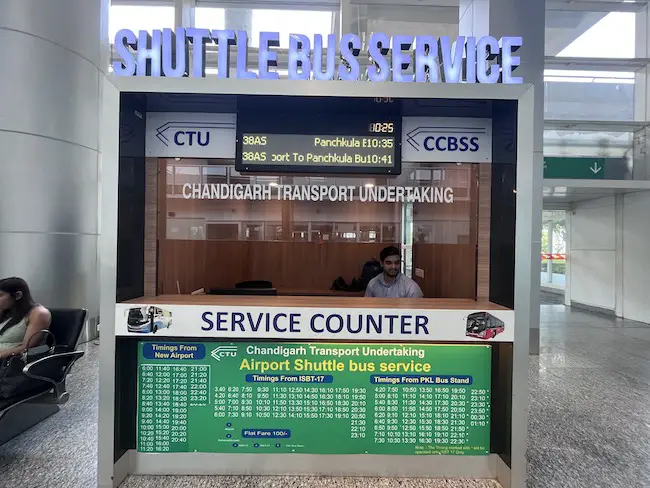
Every airport has its unique charm and challenges when getting taxis. Researching a bit about the specific airports can give you an edge.
Delhi’s airport is connected to the metro, but it’s easier to come in from the International terminal versus the domestic one.
Pro Tip: Pre-paid taxis are a great bet in most major airports. You can try Uber or Ola, and in Delhi there are designated checkpoints to find your ride. Uber may not be an option at smaller airports, or I’ve encountered a problem where I can’t find my driver since there are so many taxis in a small area.
Insider Hacks for India’s Major Airports
Delhi – Indira Gandhi International Airport (IGI)
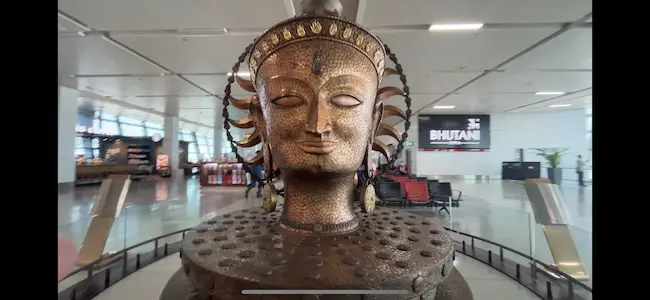
Delhi’s IGI Airport, a major gateway to India, boasts many international and local eateries.
“AnnaMaya” in Terminal 3 is a great spot for authentic Indian cuisine. For premium lounges, you’ve got the Plaza Premium Lounge and the American Express Lounge – pricing varies, but expect around $25-30 for a few hours.
Shopping enthusiasts can explore various shops, from luxury brands to local souvenirs. Most telecom kiosks here offer local SIM cards.
Prepaid taxis are a reliable transport option; the counter is just outside the arrival halls. For resting, the airport offers SAMS Snooze sleep pods.
Take the Airport Express Metro from the International terminal for the best deals and fast air-conditioned service.
Mumbai – Chhatrapati Shivaji Maharaj International Airport
Mumbai’s sprawling airport is an architectural wonder home to global and Indian restaurants.
The Street Foods by Punjab Grill offers delightful local flavors. The GVK Lounge and Loyalty Lounge are top choices for premium experiences.
There are many shopping options, including brands like Bvlgari and Swarovski. For SIM cards, head to the telecom kiosks in the arrivals area.
Pre-booked taxis or airport prepaid cabs are recommended. For rest, there are several lounges and a transit hotel called Niranta.
Kolkata – Netaji Subhas Chandra Bose International Airport

Kolkata’s airport, though smaller, offers delightful Bengali cuisine options.
“Machhli” is a seafood lover’s paradise. Premium loungers can consider the Travel Club Lounge.
Shops here have a mix of international brands and local handicrafts – perfect for souvenirs. SIM card kiosks are available post-arrival.
Ola and Uber operate here, alongside local taxis. The airport doesn’t have sleep pods, but the lounges have comfortable seating areas.
Bangalore – Kempegowda International Airport
Bangalore’s modern airport offers an array of dining, with La Tapenade being a great Mediterranean choice.
Above Ground Levell Lounge and BLR Domestic Lounge are perfect for relaxation. A plethora of shopping awaits, from tech to fashion.
SIM cards can be purchased at kiosks in the arrivals area.
App-based taxis are prevalent, but ensure you have the app downloaded. The airport has day suites and a transit hotel, making layovers comfy.
Chennai – Chennai International Airport
Chennai’s airport, a fusion of modernity and tradition, offers South Indian gems like “Madras Coffee House.”
For lounging, the Travel Club is a good choice. Shopping here leans heavily on local crafts, perfect for unique finds.
SIM cards are easily accessible in the arrivals hall. Pre-paid taxis are the go-to for travel. There are no dedicated sleep areas, but seating in the lounges is cozy.
Kochi – Cochin International Airport
Kochi’s green airport has eateries like “Dhe Puttu” which serves the local dish, puttu.
The Earth Lounge is your premium lounge option. Local spices and handicrafts dominate the shopping scene.
Telecom kiosks for SIM cards are readily available. Local taxis or app-based cabs are ideal for transport. Seating in the lounges offers a comfortable resting spot.
Goa – Dabolim Airport
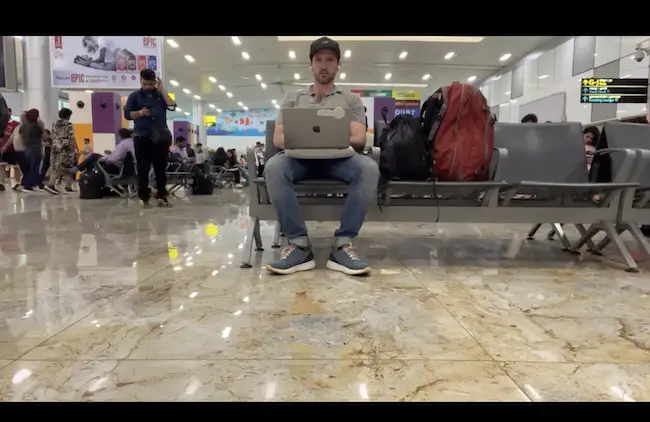
Goa’s airport, though smaller, has a beach vibe. “Café Tato” offers Goan delicacies.
The Port Lounge offers a retreat. Shopping is more local-centric, with lots of beachwear.
Getting a SIM card here is straightforward at arrival kiosks. Pre-booked taxis are your best bet. Resting options are limited to lounge seating.
Srinagar – Sheikh ul-Alam International Airport
This picturesque airport has limited dining options, but you must try the local Kahwa tea.
There’s no premium lounge, but the general seating area is decent.
Shopping focuses on local handicrafts like Pashmina shawls.
SIM card options are limited, so getting one in advance is better. Local taxis are the primary transport. The airport is smaller, so resting spots are the general seating areas.
Ladakh – Kushok Bakula Rimpochee Airport
Given its altitude, options here are limited. Local Tibetan eateries are your best bet. There’s no premium lounge, but views outside make up for it! Local crafts dominate the shopping scene. Ensure you have a SIM card before arriving. Taxis are prevalent and the primary means of transportation. Seating areas are your resting spots.
Chandigarh – Chandigarh Airport

A relatively newer hub, you can enjoy North Indian flavors at eateries. There’s no specific premium lounge, but there’s comfortable general seating. Shopping is limited but offers local souvenirs. SIM cards can be purchased in the arrivals area. App-based taxis are a good choice. Resting is confined to general seating.
Remember, each airport reflects the essence of its city. Enjoy the journey as much as the destination!
FAQ on Navigating Indian Airports
How can I skip airport security in India?
Airport security is paramount for passenger safety. What you can do, however, is streamline the process. Follow the guidelines, keep all your documents ready, and avoid wearing too many metal accessories to ensure a hassle-free security check.
What documents are required to enter the airport in India?
Carry a valid photo ID (like an Aadhar card, driver’s license, or voter ID) for domestic flights. For international flights, your passport and visa are mandatory. Don’t forget to carry a printout and e-copy of your ticket.
Is there free Wi-Fi at Indian airports?
Yes, most major airports like Delhi, Mumbai, and Bangalore offer limited free Wi-Fi, usually for about 30 minutes. After the free period, you can choose to pay for extended access.
Can I sleep at Indian airports during long layovers?
Absolutely! Many Indian airports, especially international ones, have lounges and dedicated rest zones. Some, like the Delhi and Bangalore airports, even have sleeping pods or transit hotels which can be rented.
Is it safe to eat at Indian airports?
Most certainly. While the variety and quality of food vary, branded eateries and major food chains in airports maintain good hygiene standards. If unsure, opt for packaged items or check online reviews, as suggested earlier.
Are Indian airport announcements made in English?
Yes, airport announcements are typically made in both the local language and English. In some cases, especially in international terminals, Hindi might be used too.
I’ve heard a lot about bargaining in India. Can I bargain at airport shops?
Not really. Prices at airport shops, especially branded ones, are fixed. However, street-side vendors outside the airport might give you a small discount if you ask politely.
How early should I book a cab for my departure or arrival in India?
Given the unpredictable nature of city traffic, especially in big cities like Mumbai or Bangalore, it’s wise to book your cab with a good time buffer. An hour to an hour and a half is generally good for city transfers.
Pro Tip: Some ride-hailing apps allow scheduling rides. Use this feature to pre-book your cab, ensuring one waits when you land or need to leave for the airport. But beware: Uber doesn’t guarantee anyone will accept your ride. Book one with extra time to make a backup plan if necessary.
What’s the protocol for tipping at Indian airports?
Tipping isn’t mandatory at Indian airports, but it’s a kind gesture. If someone, say a porter or a waiter, provides excellent service, a tip of around 50 to 100 rupees is appreciated. Or at a restaurant, 10% of the bill is a standard good tip.
I have special needs. How accommodating are Indian airports?
Indian airports, especially in the last decade, have made significant strides in being accessible. Wheelchair assistance, special boarding, and dedicated helplines for the differently-abled are standard. It’s always a good idea to inform your airline if you need special assistance.
Final Thoughts
Navigating the vast expanse of Indian airports can initially seem daunting, but with the right Indian airport travel tips”up your sleeve, it becomes a breeze.
Remembering key pointers like arriving 3.5 hours early, opting for tech-savvy airlines, having all necessary documentation in both digital and print formats, and being savvy about airport etiquette will put you leagues ahead as a new flyer.
As you embark on your Indian adventure, remember these essential tips to ensure your journey is as smooth as the serene backwaters of Kerala. With every flight you take, these travel hacks make your experience richer and hassle-free. Safe travels, and may every Indian airport you touch on be the beginning of a new story!
There you have it, fellow globetrotters! India awaits, and with these tips, you’re sure to navigate its airports like a pro. Safe and happy travels! 🛫🇮🇳

